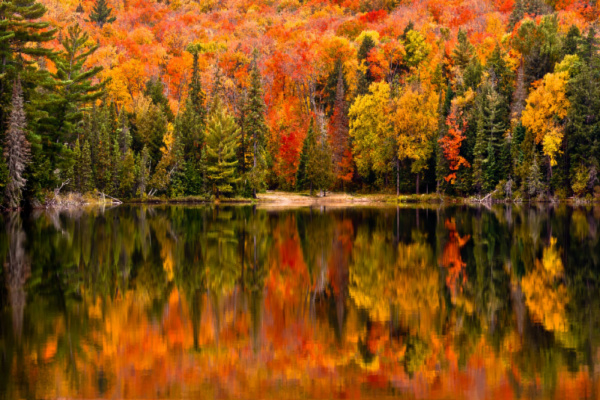Meteorological fall is underway, pumpkin spice flavors are being infused into food and drinks, and college football season has kicked off. However, there’s no better sign that autumn has arrived than a hillside of trees transformed into an ocean of yellow, orange and red
As AccuWeather reports, due to recent and upcoming weather patterns across the United States, the most breathtaking displays of fall foliage may emerge in regions beyond the usual hotspots that have captivated leaf-peepers in recent years.
Ingredients for brilliant fall foliage
The vibrancy of fall foliage is significantly influenced by the weather during the summer and early fall.
One of the key factors is consistent rainfall throughout the summer. Drought can stress the trees, causing them to shed their leaves early, as well as resulting in duller colors. Too much rain can also be detrimental. “If there’s a lot of rain from late summer into the early fall, you can get mold to develop on some of the trees and also invite lots of insects,” Lead Long-Range Meteorologist Paul Pastelok said.
Additionally, sunny days paired with cool nights in early autumn can enhance the colors. This weather pattern accelerates the breakdown of green chlorophyll in leaves, revealing brilliant shades of orange, red and yellow. However, while cool weather is beneficial, frost can be harmful since it halts the production of colorful pigments in the leaves, abruptly ending the leaf-peeping season.
Where will the best fall foliage be this year?
All of the ingredients are coming together to make 2024 a great year for fall foliage from the Great Lakes through the Mississippi River Valley, including areas in more than a dozen states.
“I think the best places to go are parts of the Midwest,” Pastelok said, adding, “The trees should have nice reds and oranges, and that could extend all the way down to parts of the Ozarks and parts of southern Missouri.”
In the Northeast, the best displays are expected across upstate New York and northern Pennsylvania, including popular destinations such as the Adirondacks, the Finger Lakes and the Pennsylvania Grand Canyon.
Where autumn colors may fall short
The start of autumn will feel more like a second summer across the eastern U.S., which will have an impact on foliage from New England through the southern Appalachians.
Warm and humid weather is likely over much of the East in the middle to late part of September. “If you add on tropical moisture coming out of the Southeast up into the Northeast at times, that could also lead to mold development and a lot of insects,” Pastelok said. Drought can also make for lackluster displays while winds from tropical systems could blow the leaves off trees, shortening leaf-peeping season.
Fall foliage is not expected to be as vivid across the West as it is around the Great Lakes, but there could still be some pockets of vibrant color. “We’ve had heat and drought here in the back end of the summer in full force, that’s going to persist into the early part of the fall season,” Pastelok said about the foliage forecast for the Rockies. A late arrival of fall-like weather will also delay the timing of peak colors.
Tips for viewing fall foliage
The best time to view fall foliage extends from the end of September through October, and reservations at popular viewing sites may soon be booked.
“Plan your trip ahead of time. Get to those places because they fill up fast,” Pastelok said. Beating the crowds is also key, so experts suggest arriving at parks and hiking trails early in the day.
It is also important to check rules and regulations before heading to a viewing spot, especially if you plan on using a drone to capture amazing aerial images, as drones are not permitted everywhere.
—
Photo Credit: James William Smith / Shutterstock.com
